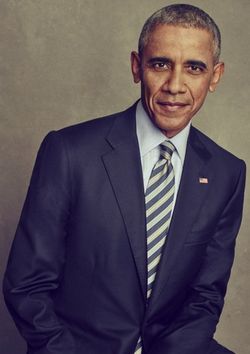The U.S. president talks through his hardest decisions about America’s role in the world.
Jeffrey Goldberg in The Atlantic:
 Friday, august 30, 2013, the day the feckless Barack Obama brought to a premature end America’s reign as the world’s sole indispensable superpower—or, alternatively, the day the sagacious Barack Obama peered into the Middle Eastern abyss and stepped back from the consuming void—began with a thundering speech given on Obama’s behalf by his secretary of state, John Kerry, in Washington, D.C. The subject of Kerry’s uncharacteristically Churchillian remarks, delivered in the Treaty Room at the State Department, was the gassing of civilians by the president of Syria, Bashar al-Assad.
Friday, august 30, 2013, the day the feckless Barack Obama brought to a premature end America’s reign as the world’s sole indispensable superpower—or, alternatively, the day the sagacious Barack Obama peered into the Middle Eastern abyss and stepped back from the consuming void—began with a thundering speech given on Obama’s behalf by his secretary of state, John Kerry, in Washington, D.C. The subject of Kerry’s uncharacteristically Churchillian remarks, delivered in the Treaty Room at the State Department, was the gassing of civilians by the president of Syria, Bashar al-Assad.
Obama, in whose Cabinet Kerry serves faithfully, but with some exasperation, is himself given to vaulting oratory, but not usually of the martial sort associated with Churchill. Obama believes that the Manichaeanism, and eloquently rendered bellicosity, commonly associated with Churchill were justified by Hitler’s rise, and were at times defensible in the struggle against the Soviet Union. But he also thinks rhetoric should be weaponized sparingly, if at all, in today’s more ambiguous and complicated international arena. The president believes that Churchillian rhetoric and, more to the point, Churchillian habits of thought, helped bring his predecessor, George W. Bush, to ruinous war in Iraq. Obama entered the White House bent on getting out of Iraq and Afghanistan; he was not seeking new dragons to slay. And he was particularly mindful of promising victory in conflicts he believed to be unwinnable. “If you were to say, for instance, that we’re going to rid Afghanistan of the Taliban and build a prosperous democracy instead, the president is aware that someone, seven years later, is going to hold you to that promise,” Ben Rhodes, Obama’s deputy national-security adviser, and his foreign-policy amanuensis, told me not long ago.
More here.
